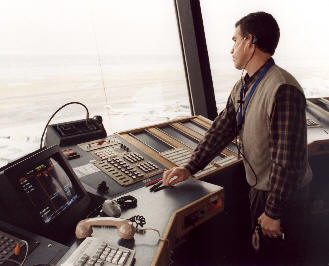
NEWSROOM
 |
NEWSROOM |
|
|
|
||||
|
FAA To Provide Timely Response With “No Radio” Events By Mike Mitchell |
||||
 |
At 7:58 pm central daylight time (CDT), the aircraft flew over the
destination airport and continued northeast for approximately 150 miles.
The MSP center controller reestablished communications with the crew at
8:14 pm and reportedly stated that the crew had become distracted and
had overflown MSP, and requested to return to MSP.
As a result the FAA is updating training and procedures for handling the
loss of two-way communication with aircraft and how other agencies are
notified, after a detailed review of air traffic contact with Northwest
Airlines Flight 188 on October 21, 2009. |
|||
|
“We work closely with other
aviation partners every day to make sure we all have a common
understanding of what’s happening in the sky,” said FAA Administrator
Randy Babbitt. “Sharing information quickly is essential, and we’re
making improvements to ensure all of our employees understand what to do
and when to do it.”
The air traffic review determined that the FAA notified other agencies
about the loss of radio contact with Northwest Flight 188 one hour and
nine minutes after the last communication with the pilots. Eight minutes
after the FAA informed other agencies via the Domestic Events Network
teleconference line, air traffic controllers reestablished contact with
the Northwest pilots.
The FAA expects to review changes in training and procedures by the end
of January 2010 and to improve the incident notification process by the
end of this month. The improvements are expected to:
·
Ensure that air
traffic controllers have the knowledge, skills and tools necessary to
know which aircraft are in communications with air traffic control and
can readily identify when communications have been interrupted.
·
Ensure that
coordination with other agencies about “no radio” events and other
aviation security events is handled effectively and accurately.
·
Ensure more
accurate preliminary investigations and more timely dissemination of
information internally. |
||||
| ©AvStop Online Magazine Contact Us Return To News |